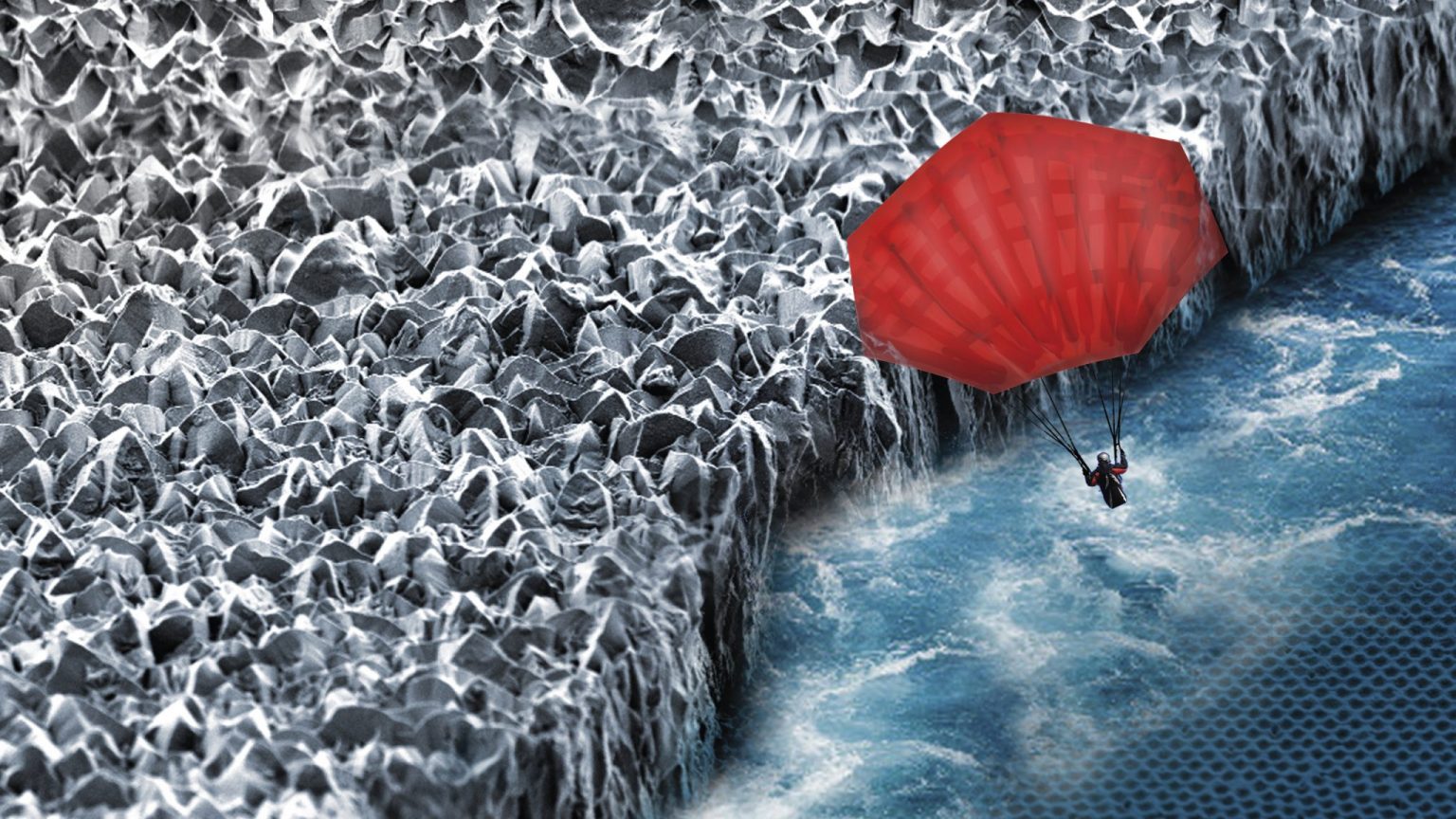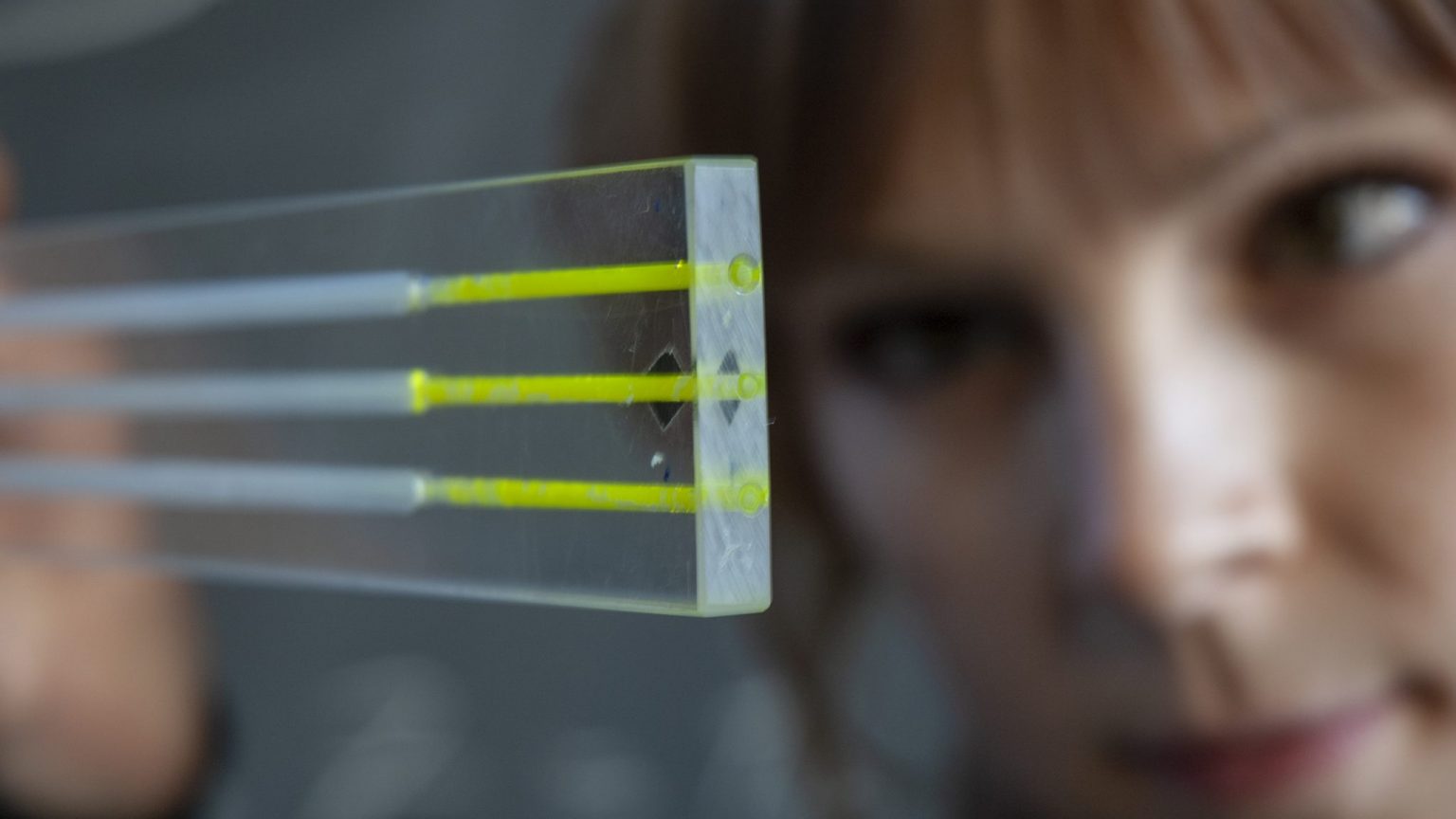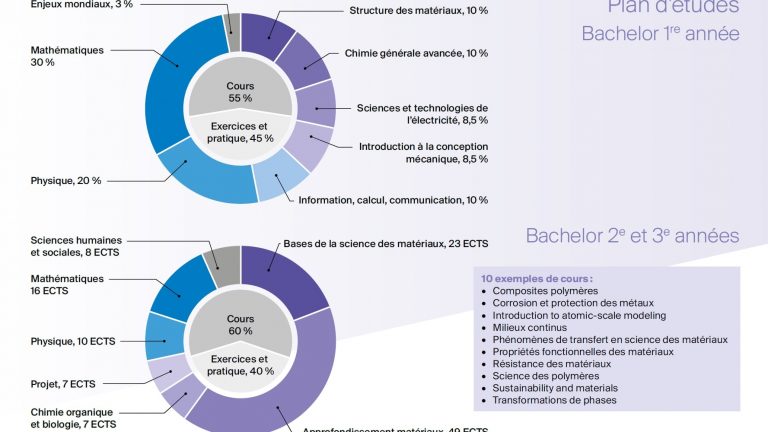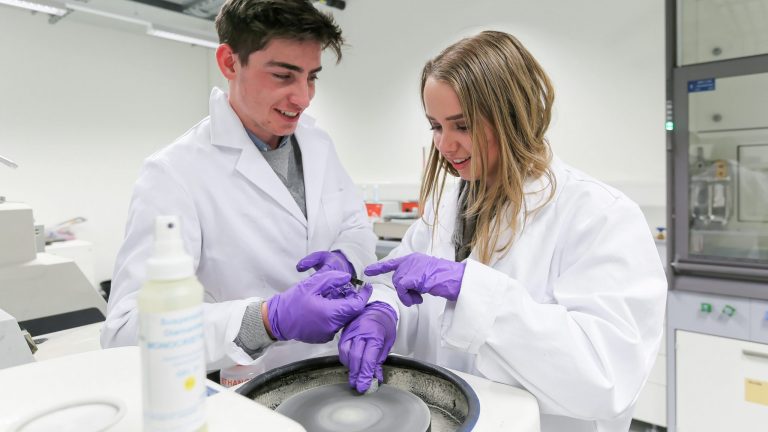Materials Science and Engineering

The study of materials is very varied because it deals with fields that are as diverse as polymers, ceramics, metals and alloys, optical materials and electronics, composites or biomaterials. For each one of these, the structures of the material must be understood at a microscopic or even atomic scale in order to grasp its macroscopic properties. Engineers can then shape the material in order to endow it with specific properties: for example varying the composition of alloys, making inclusions, or using heat treatment in order to obtain a specific crystallization. Understanding the relationship between the microstructure and the performances of materials requires the use of specialized observational techniques such as electron microscopy or spectroscopic measurements.
This information is often complemented by modeling, a process that has become a fundamental part of the modern approach to materials science.
Materials engineers are both specialized and non-specialized: their approach is at the border of many disciplines. They use basic scientific knowledge (chemistry, physics, mathematics), and constantly work with engineers who are used to designing manufacturing processes or applications (mechanics, microengineering, civil engineering, etc.).
Today, one does not remain satisfied with just developing a high-performing material but must also be responsible for finding technically and financially viable production means which might guarantee that the invention reaches the industrial market. To ensure that it receives long-term acceptance, material engineers also have to work on the life cycle of their product, incorporating both ecological constraints related to its manufacture and the possibilities of valorization after use.
Program presentation
In addition to the objective of providing the students with a solid foundation in mathematics, physics, and chemistry, the program tackles the different types of materials – metals, ceramics, polymers, and composites – as well as analytical and characterization methods. They deal with the structure and properties of materials, the underlying principles of their different transformations, and development technologies. During their final year, the students carry out a research project in the laboratory of their choice.
Bachelor: simplified study plan
Master: prospects
During this Master’s program, the students deepen their knowledge of the structure of materials, from the macroscopic to the atomic scale, in order to use their properties, master the manufacturing process, and create new products. They have a choice of several areas:
- transformation of materials and production processes
- structural materials for transportation, energy, and infrastructures
- materials for microelectronics and microengineering
- materials for medical and biotechnological applications
- materials research and development
A professional internship in a company and several projects (including the Master’s project for 30 credits) in chosen laboratories complete the training.
Other programs are also open after graduating with the Bachelor’s degree, in particular some interdisciplinary Master’s programs.
Further information on Master’s study programs.
Please note that the information regarding the programs’ structure as well as the simplified study plan may be subject to change and that these are no legally binding. Only the official regulations and study plans are binding.
Career prospects

Whatever the outlet, they are all called upon to optimize materials’ life-cycles, from production to recycling, while keeping an ever-watchful eye on their environmental impacts.
The multidisciplinary nature of the program – standing as it does at the interface between fundamental science and engineering – allows future graduates to adapt easily to an ever-evolving scientific environment, and to make paradigm-shifting contributions to the design of new materials destined for leading-edge technological applications.
To further their knowledge base, graduates can also choose to continue their academic careers in a PhD program in Switzerland or abroad.
Alumni testimony

After my Master's degree, I did a PhD in the precious metals field. I was not ready yet to enter the job market, and I was interested in doing a second Master’s degree in Technology and entrepreneurship.
At first I did not want to do a PhD, but I was offered to work on a project in collaboration with the industry. I thought it was a good compromise and I said yes. This PhD gave me the chance to really master a subject, and it will probably remain the only opportunity I will ever have to do so. In the job market, everything goes too fast: your product is not even available on the market that you are already thinking about the next one. I really enjoyed doing my PhD, even if I did work a lot.
I found a job after a couple of months in a big watchmaking company. I work for the metallurgical lab, a job that perfectly matches my profile. When I was looking for a job, there were not many offers. It was the economic crisis, and the watchmaking industry was the only one hiring. But I was ready to move from Lausanne, I applied for a job in the Swiss-German region and found something. Many engineers in materials science work in this field, especially in R&D.
After two years, I am now a lab manager. We are responsible for homologations and production support. It means that when a problem occurs in production, we are the experts who have to find a solution. For example, if a piece breaks when assembling the watch movements: does the problem comes from the material? Or from the thermal treatment? Or is it an error in the parameter settings? I am also responsible for the lab development and the implementation of work methods that ensure the quality of our products. And I am involved in alloy development, which allows me to remain active in R&D.
Before I started EPFL, I was interested in Chemistry, Microengineering and Materials Science Engineering. I chose Materials Science Engineering because it is multidisciplinary and there are not too many students in every class (compared to other departments). I never regretted my choice.
Contact
To learn more about this program, please use the following contacts:
+41 21 693 68 01

